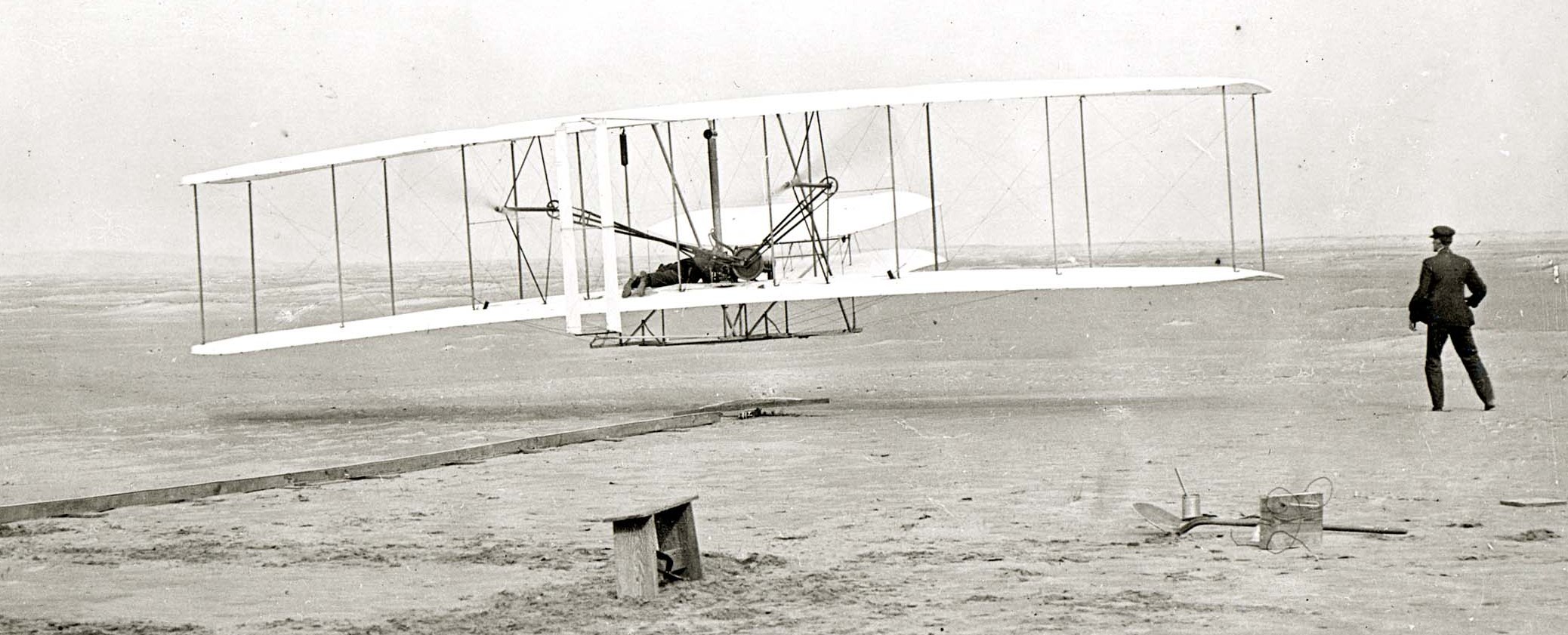
The brothers contacted a few automobile companies about the gasoline engines they produced. Following a bit of research, they decided to build their own engine.


.jpg)
.gif)
.jpg)

In fall 1903 the brothers loaded their materials and equipment and traveled from Dayton to Kitty Hawk. It took them three weeks to assemble the flyer. While dealing with various mechanical problems and broken parts, they took the 1902 glider out and practiced. On Monday December 14, 1903 they were ready to try for powered flight.

It was 10:35 a.m. Here's the story as described by Orville himself: "After running the motor for a few minutes to heat it up, I released the wire that held the machine to the track, and the machine started forward into the wind. Wilbur ran at the side of the machine, holding the wing to balance it on the track. Unlike the start on the 14th, made in a calm, the machine, facing a 27-mile wind, started very slowly. Wilbur was able to stay with it till it lifted from the track after a 40 foot run. One of the Life Saving men snapped the camera for us, taking a picture just as the machine had reached the end of the track and had risen to a height of about two feet. The slow forward speed of the machine over the ground is clearly shown in the picture by Wilbur's attitude. He stayed along beside the machine without any effort. The course of the flight up and down was exceedingly erratic, partly due to the irregularity of the air and partly to the lack of experience in handling this machine. The control of the front rudder was difficult on account of its being balanced too near the center. This gave it a tendency to turn itself when started, so that it turned too far on one side and then too far on the other. As a result, the machine would rise suddenly to about ten feet, and then as suddenly dart for the ground. A sudden dart when a little over a hundred feet from the end of the track, or a little over 120 feet from the point at which it rose into the air, ended the flight. As the velocity of the wind was over 35 feet per second and the speed of the machine over the ground against this wind 10 feet per second, the speed of the machine relative to the air was over 45 feet per second, and the length of the flight was equivalent to a flight of 540 feet made in calm air. This flight lasted 12 seconds, but it was nevertheless the first in the history of the world in which a machine carrying a man had raised itself by its own power into the air in full flight, had sailed forward without reduction of speed, and had finally landed at a point as high as that from which it started."

The brothers made three more flights that day. The second flight was for 200 feet and lasted 13 seconds. The third flight was for 200 feet and lasted 15 seconds. Wilbur made the forth flight around noon. He went 852 feet and was in the air 59 seconds. Upon landing, part of the frame was broken.

Go to After 1903 section.